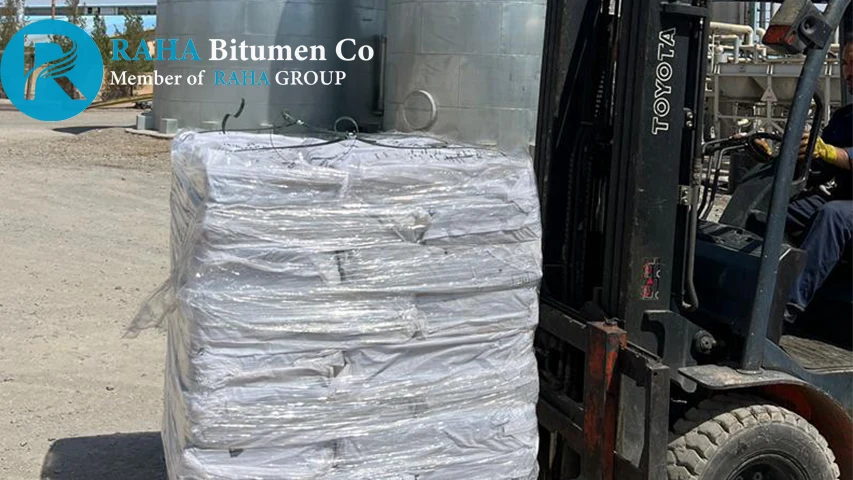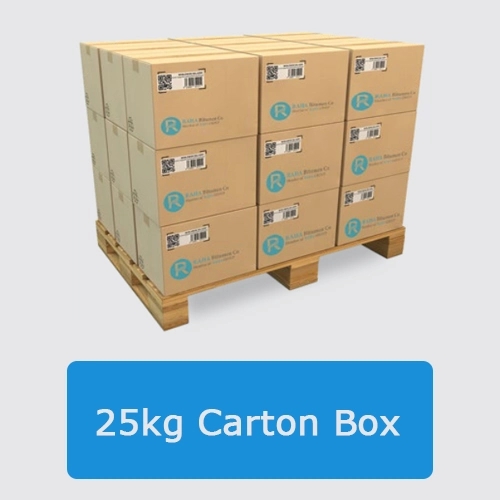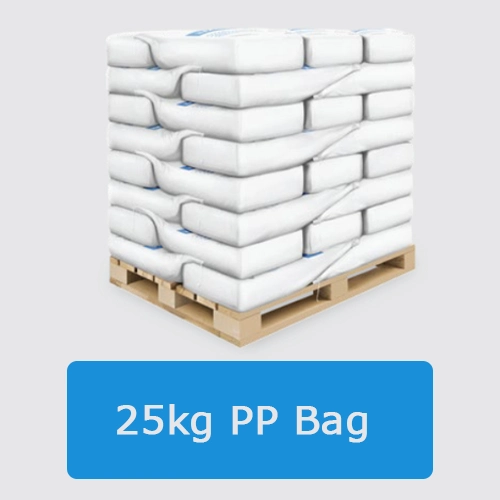Best Quality of Oxidized Bitumen 90/15 in China
Best Quality of Oxidized Bitumen 90/15 in China

Intro
Oxidized Bitumen 90/15 is an Oxidized Bitumen produced by oxidizing selected petroleum asphalts without adding the catalyst. Oxidized Bitumen 90/15 has a high softening point, a high flash point and it is highly stable during melting. Oxidized Asphalt 90/15 is produced by the air-blowing of penetration-grade bitumen. This is done at high temperatures, resulting in a material of a much higher penetration index.
Description of Oxidized Bitumen 90/15
Oxidized Bitumen 90/15 is based on petroleum bitumen which is made by blowing bitumen 60/70 by very hot air. The designation of the Oxidized Asphalt 90/15 refers to the midpoint of the softening point acceptance criteria.
Oxidized Asphalt is a solid or semi-black solid material and gradually liquid when heated. Oxidized Bitumen grades are blown or oxidized Asphalt which are produced by passing air through soft bitumen under controlled temperature conditions. This process gives the bitumen more rubbery properties than penetration or hard grade bitumen and a variety of uses in industrial applications.
Oxidized Bitumen 90/15 is produced by either Continuous or Staggered Blowing Process. Heated Penetration Grade Bitumen under controlled environment is blown with air which controls the Oil Content in the Bitumen while it oxidized. The different grades for suited applications produced are designated by two numbers to indicate the mid-points of their softening point and penetration ranges.
Oxidized Bitumen 90/15 is based on petroleum bitumen which is made by blowing bitumen 60/70 by very hot air. In addition, the numbers relate to the midpoint of the material’s softening point and penetration respectively.
The softening point value measured by Ring and Ball method as determined by ASTM D36. Also, the penetration value is in 1/10 mm as determined by IP 49 or ASTM- D5.
Production Process of Oxidized Bitumen 90/15
Here is a step-by-step breakdown of the production process:
- Preparation: The initial bitumen (usually penetration-grade bitumen) is prepared and heated to a specific temperature, generally around 240-270°C. This temperature must be regulated carefully to prevent the formation of unwanted by-products.
- Air Blowing: Air is introduced to the heated bitumen under pressure in a process known as air blowing. This phase is carried out in a specially designed reactor, the bitumen blowing unit (BBU).
- Chemical Reactions: The introduction of air initiates a series of complex chemical reactions. These include oxidation and polymerization, which lead to an increase in the bitumen’s molecular weight and viscosity.
- Cooling and Storage: Once the bitumen reaches the desired softening point and penetration levels, the air blowing process is stopped. The oxidized bitumen is then cooled and stored appropriately for further use or distribution.
- Quality Control: Stringent quality control measures are followed throughout the process to ensure the final product meets the necessary industry standards. Tests are performed to confirm parameters like softening point, penetration, ductility, and specific gravity.
The Capability of Oxidized Bitumen 90/15
Benefits of Oxidized Bitumen 90/15
- Quality assured manufacture.
- Conforms to ASTM standards with regard to softening point and penetration.
- Weatherproof Oxidized Bitumen packaging for flexibility of storage.
- Various Kinds of Oxidized Bitumen packing according to the Customer’s Purpose. (Meltable Bag, Kraft Bag, Carton Box, Block, Keg, Drum).
- High Purity Oxidized Bitumen without Using Gilsonite and any other impurities.
- Oxidized Bitumen package wrapping can be melted in conventional boilers without the need for removal.
- Blown Asphalt Carton Box packing has a non-stick insider layer that is easily Bitumen.
Usages of Oxidized Bitumen 90/15
Oxidized Bitumen 90/15 has a wide range of applications in various industries. Some of the common usages of Oxidized Bitumen 90/15 are:
- Roofing and Waterproofing: Oxidized Bitumen 90/15 is widely used in the roofing industry as a primary material for manufacturing roofing felts, shingles, and other roofing membranes. It is also used in the construction industry as a waterproofing material for concrete and other structures.
- Paving: Oxidized Bitumen 90/15 is used in the construction of pavements, highways, and runways, as it provides improved stability and resistance to high temperatures.
- Adhesives and Sealants: Oxidized Bitumen 90/15 is used as an adhesive and sealant in the manufacturing of various products such as pipe coatings, automotive undercoating, and insulation.
- Paints and Coatings: Oxidized Bitumen 90/15 is used as a raw material in the production of paints and coatings, where it provides improved resistance to water, UV radiation, and other environmental factors.
- Electrical Industry: Oxidized Bitumen 90/15 is used in the manufacturing of electrical cables as a filling material to provide protection against moisture, heat, and other environmental factors.
- Soundproofing: Oxidized Bitumen 90/15 is used as a soundproofing material in the construction industry to absorb sound waves and reduce noise pollution.
Packing of Oxidized Bitumen 90/15
Our Bitumen material is available in different packaging options, such as kraft bags, meltable plastic bags, drums, and bulk packaging. The grading, indicated by the numbers 90/15, corresponds to the softening point and penetration ranges, with a softening point of 90°C and penetration of 15 Deci millimeters.
Major of Oxidized Bitumen 90/15 Packings
25kg Carton Box- Palletized and Shrink
Wrapped:
- Loading 880 Carton Box in 20ft Contai-
ner= 22 Ton Net

25kg PP Bag- Palletized and Shrink
Wrapped:
- Loading 920 Bag in 20ft Container= 23
Ton Net

Handling and Storage :
- Storage Conditions: Store Oxidized Bitumen in a cool, dry, and well-ventilated area, away from heat, open flames, and direct sunlight. Ensure the storage area is free from ignition sources and well-ventilated to prevent volatile fumes.
- Container Inspection: Before transferring Oxidized Bitumen, ensure the container is clean, dry, and free from contaminants. Use appropriate, clean containers to prevent cross-contamination.
- Handling Precautions: Wear protective gear, including gloves and safety goggles, to avoid direct contact. Wash skin with soap and water if contact occurs. Rinse eyes thoroughly with clean water and seek medical attention if necessary.
- Avoid Overheating: Do not expose Oxidized Bitumen to high temperatures during transportation or storage, as it can soften or melt.
- Fire Safety: Keep Oxidized Bitumen away from open flames and ignition sources. Implement fire prevention measures in the storage area.
- Spill Control: Contain and collect any spilled material to prevent it from entering drains or waterways. Avoid using water to clean spills.
- Handling Equipment: Use clean, well-maintained equipment to prevent contamination when transferring Oxidized Bitumen.
Specifications of Oxidized Bitumen 90/15
| Specification | Test Method | Range |
|---|---|---|
| Specific Gravity @25 ◦C, ( kg/m3) | ASTM D70 | 1.05 |
| Penetration@25 ◦C, ( 0.1mm) | ASTM D5 | 10/30 |
| Softening Point ◦C, ( ◦C) | ASTM D36 | 80/100 |
| Loss on Heating(WT)%, ( WT%) | ASTM D6 | 0.2 max |
| Flash Point ◦C, ( ◦C) | ASTM D92 | 250 min |
| Solubility in CS2 ( WT) % | ASTM D2042 | 80% min |
| Ductility@25 ◦C | ASTM D113 | 1.5 min |
If you are interested in exporting Oxidized Bitumen 90/15 to China, please feel free to contact us. Our team specializes in facilitating international trade and ensuring the highest quality standards for bitumen. We are committed to providing seamless service, competitive pricing, and reliable delivery schedules to meet your specific requirements.

Intro
Oxidized Bitumen 90/15 is an Oxidized Bitumen produced by oxidizing selected petroleum asphalts without adding the catalyst. Oxidized Bitumen 90/15 has a high softening point, a high flash point and it is highly stable during melting. Oxidized Asphalt 90/15 is produced by the air-blowing of penetration-grade bitumen. This is done at high temperatures, resulting in a material of a much higher penetration index.
Description of Oxidized Bitumen 90/15
Oxidized Bitumen 90/15 is based on petroleum bitumen which is made by blowing bitumen 60/70 by very hot air. The designation of the Oxidized Asphalt 90/15 refers to the midpoint of the softening point acceptance criteria.
Oxidized Asphalt is a solid or semi-black solid material and gradually liquid when heated. Oxidized Bitumen grades are blown or oxidized Asphalt which are produced by passing air through soft bitumen under controlled temperature conditions. This process gives the bitumen more rubbery properties than penetration or hard grade bitumen and a variety of uses in industrial applications.
Oxidized Bitumen 90/15 is produced by either Continuous or Staggered Blowing Process. Heated Penetration Grade Bitumen under controlled environment is blown with air which controls the Oil Content in the Bitumen while it oxidized. The different grades for suited applications produced are designated by two numbers to indicate the mid-points of their softening point and penetration ranges.
Oxidized Bitumen 90/15 is based on petroleum bitumen which is made by blowing bitumen 60/70 by very hot air. In addition, the numbers relate to the midpoint of the material’s softening point and penetration respectively.
The softening point value measured by Ring and Ball method as determined by ASTM D36. Also, the penetration value is in 1/10 mm as determined by IP 49 or ASTM- D5.
Production Process of Oxidized Bitumen 90/15
Here is a step-by-step breakdown of the production process:
- Preparation: The initial bitumen (usually penetration-grade bitumen) is prepared and heated to a specific temperature, generally around 240-270°C. This temperature must be regulated carefully to prevent the formation of unwanted by-products.
- Air Blowing: Air is introduced to the heated bitumen under pressure in a process known as air blowing. This phase is carried out in a specially designed reactor, the bitumen blowing unit (BBU).
- Chemical Reactions: The introduction of air initiates a series of complex chemical reactions. These include oxidation and polymerization, which lead to an increase in the bitumen’s molecular weight and viscosity.
- Cooling and Storage: Once the bitumen reaches the desired softening point and penetration levels, the air blowing process is stopped. The oxidized bitumen is then cooled and stored appropriately for further use or distribution.
- Quality Control: Stringent quality control measures are followed throughout the process to ensure the final product meets the necessary industry standards. Tests are performed to confirm parameters like softening point, penetration, ductility, and specific gravity.
The Capability of Oxidized Bitumen 90/15
Benefits of Oxidized Bitumen 90/15
- Quality assured manufacture.
- Conforms to ASTM standards with regard to softening point and penetration.
- Weatherproof Oxidized Bitumen packaging for flexibility of storage.
- Various Kinds of Oxidized Bitumen packing according to the Customer’s Purpose. (Meltable Bag, Kraft Bag, Carton Box, Block, Keg, Drum).
- High Purity Oxidized Bitumen without Using Gilsonite and any other impurities.
- Oxidized Bitumen package wrapping can be melted in conventional boilers without the need for removal.
- Blown Asphalt Carton Box packing has a non-stick insider layer that is easily Bitumen.
Usages of Oxidized Bitumen 90/15
Oxidized Bitumen 90/15 has a wide range of applications in various industries. Some of the common usages of Oxidized Bitumen 90/15 are:
- Roofing and Waterproofing: Oxidized Bitumen 90/15 is widely used in the roofing industry as a primary material for manufacturing roofing felts, shingles, and other roofing membranes. It is also used in the construction industry as a waterproofing material for concrete and other structures.
- Paving: Oxidized Bitumen 90/15 is used in the construction of pavements, highways, and runways, as it provides improved stability and resistance to high temperatures.
- Adhesives and Sealants: Oxidized Bitumen 90/15 is used as an adhesive and sealant in the manufacturing of various products such as pipe coatings, automotive undercoating, and insulation.
- Paints and Coatings: Oxidized Bitumen 90/15 is used as a raw material in the production of paints and coatings, where it provides improved resistance to water, UV radiation, and other environmental factors.
- Electrical Industry: Oxidized Bitumen 90/15 is used in the manufacturing of electrical cables as a filling material to provide protection against moisture, heat, and other environmental factors.
- Soundproofing: Oxidized Bitumen 90/15 is used as a soundproofing material in the construction industry to absorb sound waves and reduce noise pollution.
Packing of Oxidized Bitumen 90/15
Our Bitumen material is available in different packaging options, such as kraft bags, meltable plastic bags, drums, and bulk packaging. The grading, indicated by the numbers 90/15, corresponds to the softening point and penetration ranges, with a softening point of 90°C and penetration of 15 Deci millimeters.
Major of Oxidized Bitumen 90/15 Packings
25kg Carton Box- Palletized and Shrink
Wrapped:
- Loading 880 Carton Box in 20ft Contai-
ner= 22 Ton Net

25kg PP Bag- Palletized and Shrink
Wrapped:
- Loading 920 Bag in 20ft Container= 23
Ton Net

Handling and Storage :
- Storage Conditions: Store Oxidized Bitumen in a cool, dry, and well-ventilated area, away from heat, open flames, and direct sunlight. Ensure the storage area is free from ignition sources and well-ventilated to prevent volatile fumes.
- Container Inspection: Before transferring Oxidized Bitumen, ensure the container is clean, dry, and free from contaminants. Use appropriate, clean containers to prevent cross-contamination.
- Handling Precautions: Wear protective gear, including gloves and safety goggles, to avoid direct contact. Wash skin with soap and water if contact occurs. Rinse eyes thoroughly with clean water and seek medical attention if necessary.
- Avoid Overheating: Do not expose Oxidized Bitumen to high temperatures during transportation or storage, as it can soften or melt.
- Fire Safety: Keep Oxidized Bitumen away from open flames and ignition sources. Implement fire prevention measures in the storage area.
- Spill Control: Contain and collect any spilled material to prevent it from entering drains or waterways. Avoid using water to clean spills.
- Handling Equipment: Use clean, well-maintained equipment to prevent contamination when transferring Oxidized Bitumen.
Specifications of Oxidized Bitumen 90/15
| Specification | Test Method | Range |
|---|---|---|
| Specific Gravity @25 ◦C, ( kg/m3) | ASTM D70 | 1.05 |
| Penetration@25 ◦C, ( 0.1mm) | ASTM D5 | 10/30 |
| Softening Point ◦C, ( ◦C) | ASTM D36 | 80/100 |
| Loss on Heating(WT)%, ( WT%) | ASTM D6 | 0.2 max |
| Flash Point ◦C, ( ◦C) | ASTM D92 | 250 min |
| Solubility in CS2 ( WT) % | ASTM D2042 | 80% min |
| Ductility@25 ◦C | ASTM D113 | 1.5 min |
If you are interested in exporting Oxidized Bitumen 90/15 to China, please feel free to contact us. Our team specializes in facilitating international trade and ensuring the highest quality standards for bitumen. We are committed to providing seamless service, competitive pricing, and reliable delivery schedules to meet your specific requirements.


